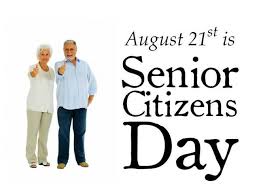National Herpes Awareness Day – October 13, 2022, history, significance
October 13 is National Herpes Awareness Day, an opportunity to raise awareness around the causes, risks, and treatment of different types of herpes infections, particularly genital herpes. Perhaps more importantly, it’s a chance to debunk myths around the disease, start conversations about what it really means to have a genital herpes infection and, hopefully, destroy the stigma around the disease that impacts nearly 16% of women between the ages of 14 and 49.
National Herpes Awareness Day is sponsored by FemiClear, a brand that has launched a new over-the-counter genital herpes symptom relief product that has been shown to kill 99.9% of the Herpes Simplex I and II viruses in laboratory tests.* In fact, in a test of women experiencing a genital herpes outbreak, >90% said that they experienced less severe outbreak symptoms.**
*Independent accredited laboratory test (non-human/non-animal) measured the antiviral activity of FemiClear using a suspension time-kill procedure against Herpes.
**As self-reported in a comprehensive IRB approved study of 50 women diagnosed and actively experiencing a genital herpes outbreak. These women received modest compensation. Not a cure for herpes or a replacement for prescription antiviral medication. Individual results may vary. Data on file. See FemiClear.com.
HISTORY OF NATIONAL HERPES AWARENESS DAY

Herpes has been one of the most misunderstood (and mistreated) ailments in history. It has been around for millions of years and affected nearly every species of human along the evolutionary scale. In fact, in 2017, scientists discovered the ancient primate believed to have been herpes patient zero. Needless to say, we hominids have been dealing with the itching, burning, tingling pain of herpes for millennia.
However, the stigma around herpes is relatively new. Throughout most of modern medical history (ie. the 20th century) the stigma of herpes was relatively low. Yes, it was a sexually transmitted infection, but it was also transmitted through other forms of contact and it wasn’t considered a discrete type of infection until the 1960s.
By the 1980s, herpes, particularly Herpes Simplex II, the virus known to cause most genital cases, became a very real source of public shame and embarrassment. Time Magazine labeled it “the new sexual leprosy” bringing with it the expected stigma and turning it into a boogeyman on the level of other sexually transmitted diseases.
The fact is, having herpes shouldn’t dramatically change a person’s self-worth and sexual health. Herpes Awareness Day was created to start a conversation around the condition and encourage people to seek treatment for the symptoms (there’s currently no cure) and promote healthy, reasonable discourse about the virus’ actual impact on people’s lives. It’s an important conversation that is long overdue and the folks at FemiClear are taking the lead as they try to help women living with genital herpes get their lives back.
NATIONAL HERPES AWARENESS DAY TIMELINE
~ 1.4 million BC
Herpes Simplex 2 Makes the Leap
Nearly one and a half million years ago, HSV-2 made the leap from African Apes to one of our early human ancestors. It’s been with us in one form or another since then.
1st Century A.D.
When in Rome…ban kissing?
It is believed that due to an outbreak of herpes, Roman Emperor Tiberius temporarily banned kissing. It would be the first of many overreactions to the disease throughout history.
1713
Herpes Simplex Gets Its Name
The first reference to Herpes Simplex is found in Richard Boulton’s A System of Rational and Practical Chirurgery (a real page turner, we’re assured).
1940s
Herpes is Found to Be a Virus
Despite being part of human culture for millenia, the exact nature of herpes wasn’t discovered until the 1940s when it was identified as a virus.
1974
Aciclovir Hits the Pharmacy Shelves
Aciclovir is the first widely-used antiviral medication for the treatment of HSV-2. It would be followed by several others in subsequent decades.
August 2, 1982
Herpes Gets the Scarlet Letter
Time Magazine contributed to genital herpes sensationalism with a cover story inaccurately describing Herpes as an epidemic.
September 2020
FemiClear for Genital Herpes Symptoms Hits Stores
FemiClear hits shelves in the U.S. providing women with herpes symptom relief and leading the charge against the stigma of herpes.
HOW TO OBSERVE NATIONAL HERPES AWARENESS DAY
Educate yourself about genital herpes
What do you really know about HSV-1 and 2? Probably less than you thought. Take the time to educate yourself about these viruses and the stigmas around them.
Have a conversation about genital herpes
It may sound difficult but the more taboo we make talking about genital herpes, the longer the stigma will continue to impact those with the virus
If you think you have it, seek treatment
This is a no-brainer but it’s easy to feel too embarrassed to see a doctor. If you’re experiencing symptoms, get treated, and hopefully kick some of that embarrassment because you’re not alone
WHY NATIONAL HERPES AWARENESS DAY IS IMPORTANT
Because one in six women have the virus and many don’t know it
Women are twice as likely to have genital herpes compared to men. It is estimated that 16% of women have herpes while just slightly over 8% of men have the condition. National Herpes Awareness Day hopes to bring some of that to light.
It can often go untreated due to embarrassment
It’s not easy to admit that you have herpes, even to a doctor, so many don’t seek the treatment they need because the stigma is too great.
Because this stigma needs to go
The genital herpes stigma is pervasive and ill-deserved. It is a very common disease and while it can’t be cured, it can be well treated. The conversation needs to happen to bring this pernicious stigma down.
Sandeep Raiza — Content Writer, Website Designer, SEO Strategist, and WordPress Expert AI specialist delivering impactful digital solutions that drive business growth.Combining creative storytelling with technical expertise.



